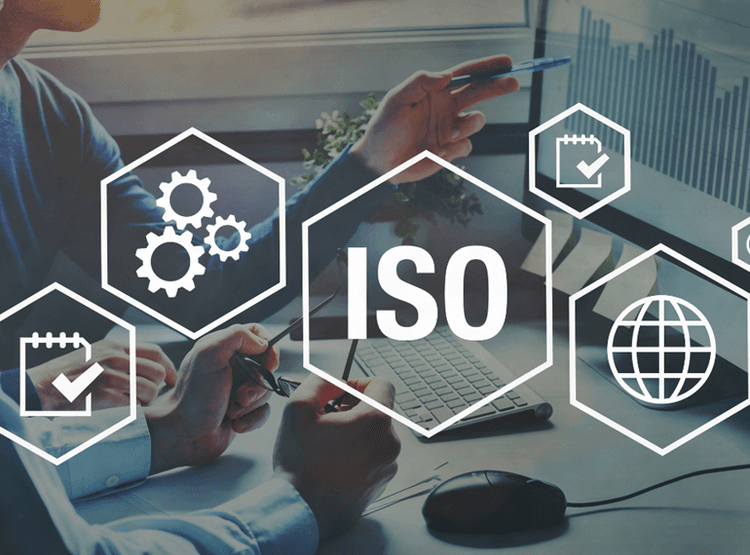- Risk Mitigation
- ESG factors
- Environmental risk mitigation
- ESG factors
Sustainability practices play a crucial role in mitigating risks associated with environmental, social, and governance (ESG) factors. Companies that integrate sustainable practices are better equipped to weather market disruptions, regulatory changes, and reputational risks. Based on an extensive and comprehensive literature review, we can confidently assert the following statements:
- Companies with strong social and governance practices are better at managing stakeholder relationships and reputational risks, ultimately contributing to long-term viability.
- Companies with sustainability strategies are found to be more resilient during economic downturns and better at managing supply chain disruptions.
- Companies with strong sustainability practices are better positioned to navigate regulatory challenges.
- Companies with strong governance practices are less likely to face governance-related scandals, which can impact their valuation.
All this underscores the connection between sustainability and risk mitigation, emphasizing how companies that prioritize sustainability are better equipped to ensure their long-term viability and, consequently, can better access capital and be more attractive targets for acquisition due to their reduced exposure to various risks and higher valuation.
- Access to capital
- Green bonds
- Emitting obligations linked to sustainability performance
- Green bonds
Research has consistently shown that investors are increasingly interested in environmental, social, and governance (ESG) investments.
Investors, particularly in the wake of the growing ESG investing trend, are increasingly directing capital towards sustainable companies. Companies that aligns with sustainable objectives (for example as defined by the EU Taxonomy) can secure financing and attract socially responsible investment, particularly through green bonds. Raising debt specifically to fund environmentally friendly projects and initiatives, has gained prominence as a means of channeling capital towards sustainable endeavors. This access to capital through green bonds can enhance the financial strength of companies and positively impact their valuation.
Hoteliers can use green bonds as a means of financing sustainable and environmentally responsible projects within their properties. Green bonds are a type of debt instrument specifically earmarked to fund projects with positive environmental impacts. Here are some means hoteliers can use these instruments:
- Investment in Sustainable Infrastructure: Hoteliers can issue green bonds to raise capital for sustainable infrastructure projects within their properties. This can include investments in energy-efficient HVAC systems, renewable energy installations (such as solar panels), water-saving technologies, and eco-friendly building materials. These initiatives not only reduce the hotel's environmental footprint but also lower operational costs over time.
- Energy Efficiency Improvements: Green bonds can be used to finance energy-efficient upgrades, such as LED lighting, smart thermostats, and occupancy sensors. These measures can significantly reduce energy consumption and greenhouse gas emissions, resulting in cost savings and a more environmentally responsible operation.
- Resource Conservation Initiatives: Funding from green bonds can support water conservation efforts in hotels, including the installation of low-flow fixtures, rainwater harvesting systems, and wastewater treatment technologies. These measures help reduce water consumption and contribute to the hotel's sustainability goals.
- Waste Reduction and Recycling: Hoteliers can use green bond proceeds to invest in waste reduction and recycling programs. This may involve setting up recycling facilities, composting organic waste, and implementing strategies to minimize single-use plastics and other non-recyclable materials.
By issuing green bonds and strategically allocating the funds toward environmentally responsible projects, hoteliers can not only enhance their sustainability initiatives but also attract environmentally conscious investors and guests. These investments can contribute to the long-term success and competitiveness of the hotel industry while reducing its environmental footprint.
- Commanding a higher RevPAR
- Impact on hotel revenues
- Literature review
- Impact on hotel revenues
Third party accredited green building rating systems such as LEED (Leadership in Energy and Environmental Design) provide a universally acknowledged solution for discerning properties according to their specific sustainability criteria, effectively reducing the reliance on subjective judgments when categorizing assets as “sustainable” or “green”.
Multiple research studies suggest that LEED-certified hotels command a higher RevPAR (Revenue Per Available Room) compared to their non-LEED counterparts. We expand below on an example and provide a detailed bibliography in annex.
In their study, Cornell University researchers conducted a comparative analysis of 93 LEED-certified hotels in the United States, utilizing financial data sourced from the university's Centre for Hospitality Research. This dataset encompassed not only the 93 LEED-certified hotels but also included 514 non-certified competitors. These hotels were drawn from diverse categories, locations, operational models, and sizes. Within the certified hotel subset, 31 percent belonged to the luxury category, and 84 percent fell under the upscale or higher-tier classification. Notably, there was no discernible difference in ownership structure between the two subsets.
The study's findings revealed that guests at LEED-certified hotels tended to pay more for their accommodations. Over a span of two years, the average daily rate for guests at LEED hotels increased by $20 per night when compared to non-certified counterparts. Additionally, hotels that underwent property renovations to attain LEED certification not only achieved occupancy rates surpassing their prior levels but also outperformed their competitors in this regard.
However smaller in size and depth when compared to commercial real estate the literature in the hospitality industry is, there is a growing body of evidence suggesting that LEED labelled hotels generated revenue performance premiums over noncertified hotels. But despite the existence of this increasingly dense body of research sustainability in general and green building certification in particular are still often perceived as pure CAPEX in the hospitality industry.
Yet, this perception does not take into account the reality of the many synergies that exist between credits that impact each other financially, negatively or positively. It also ignores the opportunities that exist through new contractual models, prescription and specifications.
- Opportunities
In a typical hotel, energy consumption is distributed as follows: approximately 40% is allocated for heating and air conditioning, 25% for lighting, 15% for hot water heating, 9% for restaurants and food services, 7% for ventilation, and the remainder is attributed to energy needs for appliances, elevators, escalators, and other equipment. Hot water usage is also estimated at an average of 120 litters per guest per day, resulting in an annual energy consumption of 1850 kWh per guestroom specifically for hot water heating (as reported by Energy Star in 2007 and Bohdanowicz et al. in 2001).
Despite its potential to significantly reduce energy costs, current solar technology is often viewed as an additional expense when compared to conventional construction techniques.
This conventional analysis fails to capitalize on the possibilities unlocked by integrative design (where PV cells made of structural glass serve as the primary roofing material, leading to substantial material savings, CAPEX reduction, and carbon footprint attenuation), as well as innovative financial and tax models, and organizational changes.
That said, the most significant opportunity lies in the establishment of a comprehensive sustainability policy that connects green strategies to green finance. This policy can be implemented through a design and specification manual along with a quality control plan that is continually monitored and reported upon. Green Building certifications such as LEED can be used to guarantee conformity between assets and policies and become the cornerstone of a green bond issuance strategy.
The same logic can be used when considering other financing mechanisms such as loans with eco-conditionalities.
- Wrap-up and conclusion
The critical role of sustainability in influencing financial performance is evident at every stage of a hotel's lifecycle, from design and construction to ongoing operations, and even during valuation and acquisition processes. This evolving dynamic underscores that a company's commitment to sustainable practices has the potential to substantially reduce costs, enhance overall value, and increase its attractiveness to investors and guests alike.
Sustainability practices play a pivotal role in mitigating environmental, social, and governance (ESG) risks. Companies with strong sustainability strategies are better equipped to weather market disruptions, regulatory changes, and reputational risks. Robust social and governance practices contribute to managing stakeholder relationships, reducing governance-related scandals, and enhancing resilience during economic downturns. The alignment with sustainability also helps in navigating regulatory challenges.
As the ESG investing trend gains momentum, investors are increasingly directing capital towards sustainable companies. Green bonds have emerged as a means of securing financing for environmentally friendly projects. Hoteliers can leverage green bonds to fund sustainable initiatives within their properties, such as energy-efficient infrastructure, resource conservation, waste reduction, and recycling programs. This not only strengthens the financial position of hotels but also aligns them with the values of environmentally conscious investors.
Third-party accredited green building rating systems like LEED provide an objective framework for assessing sustainability criteria, reducing the subjectivity in labelling properties as "sustainable" or "green." Research shows that LEED-certified hotels command higher Revenue Per Available Room (RevPAR) and outperform non-certified competitors. The link between sustainability and financial performance is clear, yet there is still a perception of sustainability as a mere capital expenditure in the hospitality industry, this perception emerges from a conventional analysis that often overlooks the potential of integrative design, innovative financial models, and organizational changes in achieving sustainability goals.
In conclusion, the intricate relationship between sustainability and valuation creation is becoming increasingly evident in the hospitality industry. By prioritizing sustainability throughout the hotel's lifecycle, from design to operations, and by embracing innovative financial models and technologies, hotels can reduce risks, access capital, enhance their financial performance, and contribute to a more sustainable future while meeting the evolving demands of guests and investors.

